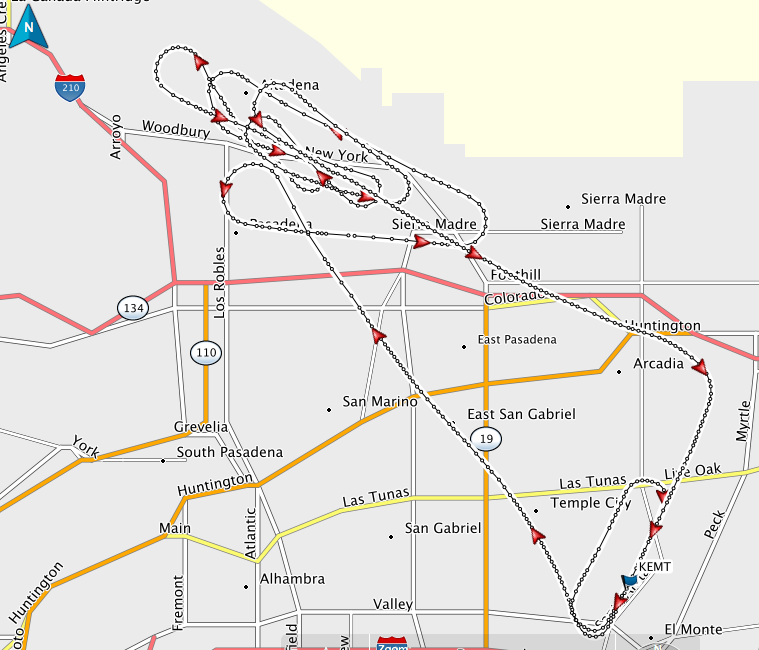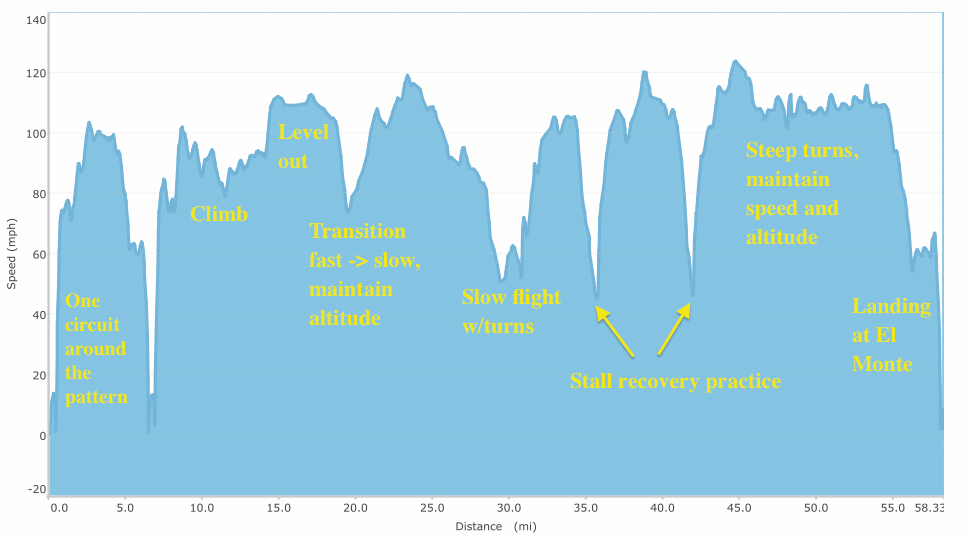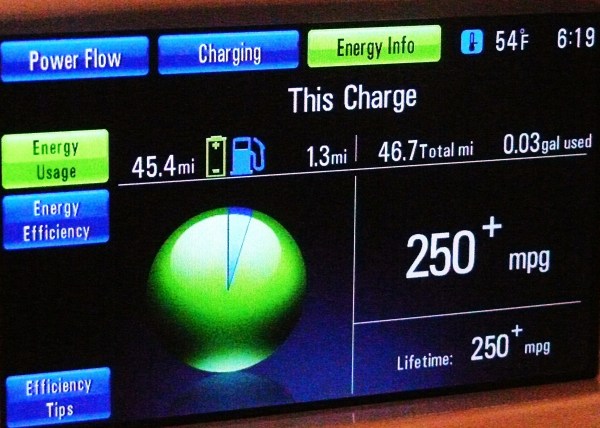In July, I did a couple of test drives with the Leaf and other electric vehicles. In early August, I settled on the Leaf as my car of choice. Not one to be rushed into a purchase before doing my research, I passed up the last day of the August window for getting a free home charging station, figuring I would come back in September if I really wanted that car.
This may have been a mistake. (Or maybe not.)
That same day (August 10), I began negotiations with Rudy, my salesperson from Nissan Duarte, for a lease price. We dickered the price a little by email, and then we agreed that he’d contact me again on September 1 with updated prices “in case anything changes.” I would then be poised to swoop in on September 3, the first day that the free charging stations would be available that month, and drive away in my Leaf.
In the meantime, I called two other local dealerships and compared prices; they were all about the same. I also belatedly realized that the $2500 CA electric vehicle rebate was rapidly exhausting its funds. Would they last until September?
Late in the month, I did a bunch of research on leases so as to be a savvy consumer and learned that the prices I’d gotten were much inflated. But now I was equipped to really negotiate.
Monday
On September 1, I failed to receive updated numbers from Rudy. So I called him on Monday, September 2. I negotiated the price down. I was excited. This was working!
“You have a car for me?” I asked.
“Oh yes,” he said. “No problem.”
“In the color I want? Blue?” I realized he’d never asked me what color.
“Yes, we’ll have it. When do you want to make your appointment for?”
Tuesday
On September 3, I woke up all psyched to be getting a new car at my 7 p.m. appointment. All was going well until 2 p.m., when I received this email from Rudy:
Hi i know your at work so i did not want to call with this important information.
I am very sorry but the sv leaf that you we were out to get has been sold by the dealership. Is there a second color option?
I called him immediately. He confirmed: they had SOLD THE CAR I HAD AN APPOINTMENT TO LEASE that day.
“It’s first-come, first-served, you know?”
No, I did not want another color. I wanted the car I’d spec’d out. I asked him to see if other dealerships in the area had it. His answer: No. There was not a single Leaf SV in blue with premium package to be had in the Los Angeles area.
I couldn’t believe it. I hung up and started calling. I called 6 dealerships in an ever-widening circle, despite knowing they must be checking the same inventory database. No. No one had that car. I was stunned. THEY SOLD MY CAR!
A couple of hours later, I get a call from Nissan Alhambra. Miguel tells me that they don’t have the car, but will be getting one that night or maybe the next morning. I quote the amount I’d negotiated with Rudy, and Miguel sputters and says that it’s way too low. So I try to call Rudy back and see if he can get that car transferred to his dealership. Rudy is “with a client” so I instead get Matt, who says, “Oh yeah, I’m the one who sold your Leaf.” Thanks, Matt.
Matt claims that Alhambra may be lying about their inventory, as he looked “30 days out” and no one is getting that particular car. I can’t figure out why he doesn’t contact them himself to find out. We go in circles until I finally say, “So, what I’m hearing is, you’re not willing to CALL Alhambra and get this car from them, if it does exist. So basically, you don’t want my business.” Matt then helpfully adds that they actually DO have the blue Leaf that I want, because someone bought it two weeks ago and just traded it in for a Sentra. But they can’t lease it to me because they can only lease new cars, not two-week-old cars.
I give up on Duarte and call Alhambra back to begin negotiating. I get Emmett, a manager. At first he tries to say something about MSRP, but I’m not having any of that and after some arm-twisting, he seems to switch out of salesperson mode and become this completely reasonable, straight-talking guy who’s a pleasure to work with. We end up at a number for the car that’s actually $500 cheaper than the price Rudy and I had reached. Unlike Rudy, he glibly itemizes the “non-tax fees” so I know exactly what’s included. Emmett tells me that Danny will call me back the next day as soon as the car comes in.
Wednesday
I hear nothing from Danny, so I call the dealership at 6 p.m. Turns out that Danny wasn’t working that day. I ask for Emmett. He’s “with a client.” I get Omar, who transfers me to Thomas, an “inventory manager,” which sounds promising. Thomas says, “We have your car! Only it’s got the charcoal interior, not the light gray. Let me do another search and call you back.” He doesn’t. I call back at 6:30. Thomas says he found a blue Leaf with gray interior but needs to consult with Emmett to make sure the MSRP matches what we’d negotiated, and he’ll call me back in 5-10 minutes.
At 7 p.m., I call Thomas back. He ruefully reports that he “made a mistake” and there is no blue/gray Leaf. But they absolutely positively will have one by 10 a.m. the next morning (“just as you’re waking up!” he adds bizarrely), and that Emmett will call me.
Thursday
I don’t get any calls so I call Emmett at 11 a.m. He’s not in the office that day but takes my call on his cell. They don’t have the Leaf I want (model SV) and in fact the blue/charcoal one Thomas mentioned to me was actually a model S. Emmett hands me off to Ron, another manager, who is in the office that day. Ron turns out to also be a very reasonable, straight guy. The bad news from Ron: There is no blue Leaf SV to be found. The nearest one is in Seattle. No one is getting one for at least the next 30 days, which means the CA rebate would undoubtedly be exhausted. Would I consider another color?
At this point I was so exhausted that I contemplated it. Silver. Would I be okay with silver? I detested the idea of pursuing a stupid quixotic quest that turned so pointedly on something as inane as the color of the vehicle. Did I really need blue? But if I got silver, would I regret it for the 36 months of the lease? Ron and I briefly discuss whether I can have the car PAINTED. Turns out, no: or at least, not without paying a fine at the end of the lease for modifying a car I don’t own.
And then a weird thing happened. See, the nearest silver Leaf SV + premium package was 55 miles away, barely within the Leaf’s range. And that one, too, had the charcoal interior, not a desirable attribute in southern CA. There was also a silver SV with the light gray interior, but it was 110 miles away, definitely not in the Leaf’s range. Yes, they could have it shipped. Shipped! It hit me like a bizarre reality check. I’d talked myself into how I could make a Leaf work, since most of my driving does fall within the vehicle’s 75-mile radius. I think. But seeing how hard it was just to get the car within reach made me rethink that. I’ve been saying all along that I wanted the Leaf even though it wasn’t really the “practical” choice… and now, did I really want to bend over backwards to get a car that wasn’t really a practical car?
No.
I didn’t.
So I said, “No, thanks,” along with a “but you’ve been so great through all of this that I *wish* I were buying a car from you,” to which Ron laughed.
And I hung up the phone.



_th_4.jpg)





